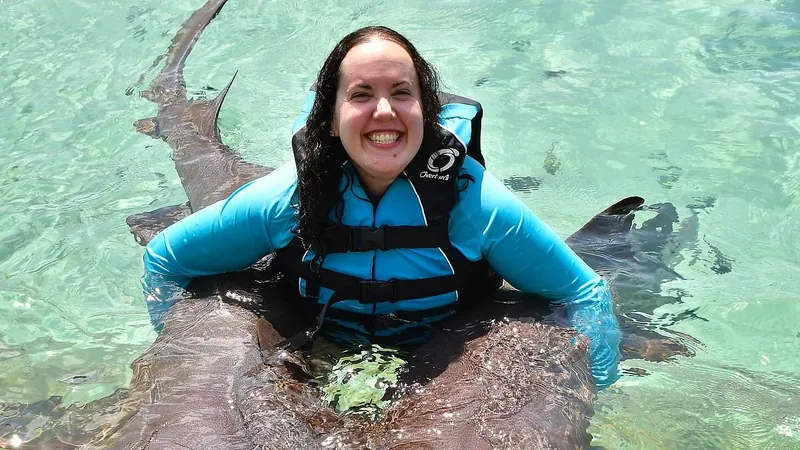
Young Woman’s Lifesaving Discovery: How Everyday Fatigue Was a Sign of a Deadly Heart Condition
2025-06-28
Author: Kai
At just 26, Rachel Freedman from New York City felt more like an elderly person than a vibrant young graduate student. She struggled with simple tasks—catching her breath after climbing subway stairs, making a quick grocery run, or even taking a shower.
Feeling off, Freedman initially chalked her exhaustion up to needing to lose weight and committed to a stricter exercise regimen in hopes of reclaiming her energy.
However, everything changed when she was hospitalized in May 2019. An electrocardiogram revealed abnormal heart rhythms.
Against the doctors' initial reassurances that it was 'probably nothing serious,' Freedman's determined mother insisted on further testing.
At NYU Langone Health, an echocardiogram exposed a shocking diagnosis: obstructive hypertrophic cardiomyopathy (HCM)—a condition where the heart walls thicken, obstructing blood flow. This silent assailant is present in one of every 500 individuals, often lurking undetected until a heart failure or cardiac arrest occurs.
Alarmingly, HCM is the leading cause of sudden cardiac deaths in young people, and these have alarmingly surged in the United States in recent years. Recent studies from Harvard paint a grim picture, showing a 17% increase in heart attack deaths during and after the COVID-19 pandemic, predominantly affecting those who did not recognize their symptoms.
Freedman’s condition was dire—her heart muscle measured over 30 millimeters thick, three times the thickness of a healthy heart. Despite her youth, doctors warned her that the structure of her heart diverted blood flow, leading to dangerous, irregular rhythms.
To combat this, Freedman was prescribed a regimen of medications to manage her heart rate and cholesterol, including beta blockers and statins. A defibrillator was implanted into her chest, providing a jolt to correct erratic heartbeats.
Despite losing 60 pounds and striving for a healthier lifestyle, Freedman's symptoms persisted, leaving her feeling restricted. Dr. Daniele Massera, her cardiologist, confirmed her struggles: "At 26, she could only manage a six-minute treadmill walk, which is far below what you'd expect. Fainting spells put her at high risk."
In August 2020, after 15 months of battling her condition, Freedman underwent a septal myectomy, an intricate heart surgery intended to remove the excessive tissue. The procedure typically lasts between three to four hours.
Post-surgery, Freedman engaged in four months of cardiac rehabilitation, focusing on light exercises and dietary adjustments aimed at promoting heart health.
Fast forward nearly five years, Freedman is thriving. She now conquers hikes with friends and strolls up stairs without the breathlessness that once plagued her. Gone are the chest pains that used to be a constant companion. She can even walk the Brooklyn Bridge instead of taking the subway.
In 2022, she celebrated another milestone—marriage—as she continues her studies to become a high school guidance counselor.
Freedman expresses her gratitude profoundly: "Not only did you save my life, but you also changed it entirely," she tells her doctors.


 Brasil (PT)
Brasil (PT)
 Canada (EN)
Canada (EN)
 Chile (ES)
Chile (ES)
 Česko (CS)
Česko (CS)
 대한민국 (KO)
대한민국 (KO)
 España (ES)
España (ES)
 France (FR)
France (FR)
 Hong Kong (EN)
Hong Kong (EN)
 Italia (IT)
Italia (IT)
 日本 (JA)
日本 (JA)
 Magyarország (HU)
Magyarország (HU)
 Norge (NO)
Norge (NO)
 Polska (PL)
Polska (PL)
 Schweiz (DE)
Schweiz (DE)
 Singapore (EN)
Singapore (EN)
 Sverige (SV)
Sverige (SV)
 Suomi (FI)
Suomi (FI)
 Türkiye (TR)
Türkiye (TR)
 الإمارات العربية المتحدة (AR)
الإمارات العربية المتحدة (AR)